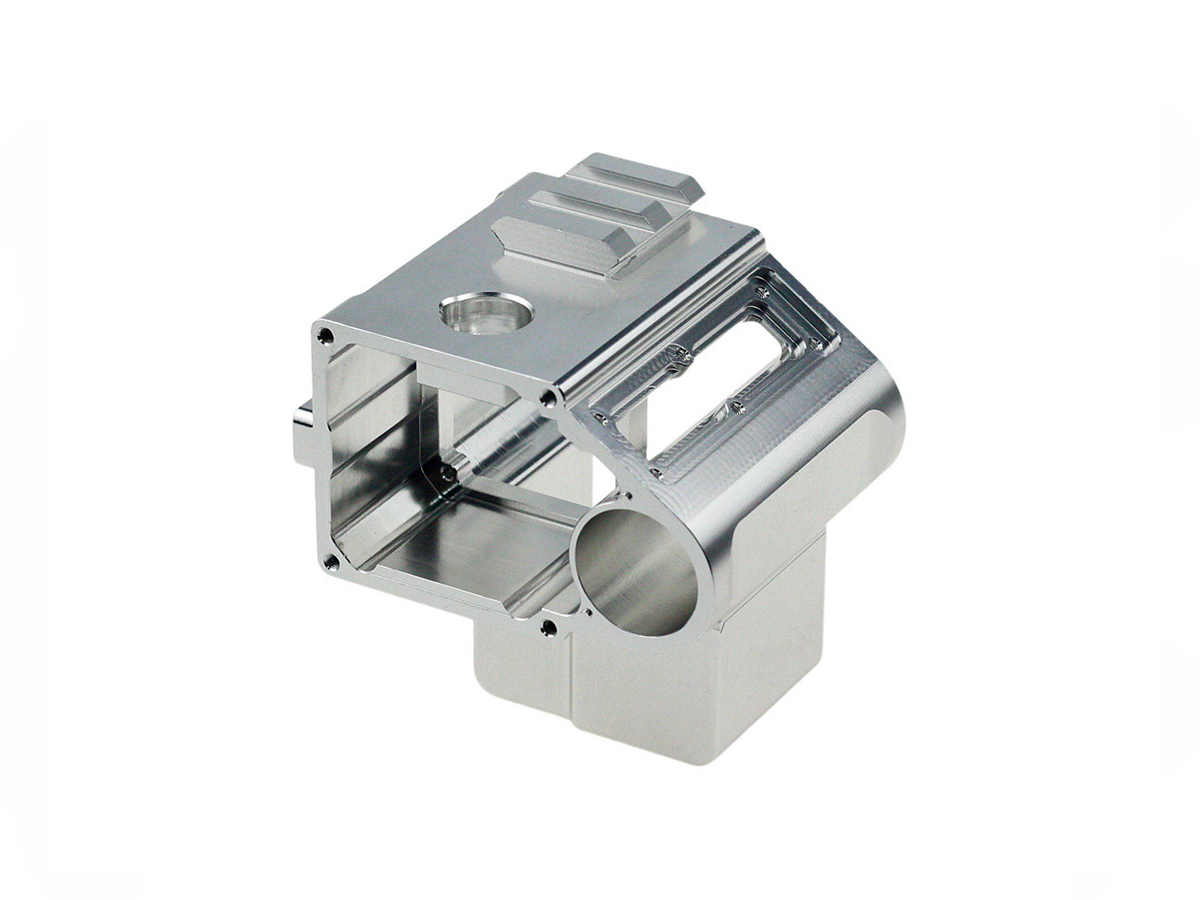Advanced CNC Machining for Precision Automotive Suspension and Steering Parts
Introduction to CNC Machined Automotive Components
Precision suspension and steering components are essential to vehicle safety, handling, and comfort. Advanced CNC machining ensures these automotive parts meet strict dimensional tolerances, excellent mechanical properties, and high-quality surface finishes. Automotive suspension and steering systems must consistently manage heavy dynamic loads, resist wear, and deliver accurate, responsive control. Typical materials include aluminum alloys (6061, 7075), alloy steels (4140, 4340), stainless steel (SUS304), and titanium alloys (Ti-6Al-4V).
Utilizing professional CNC machining services, manufacturers can reliably produce complex, high-performance automotive parts precisely tailored to demanding specifications.
Material Performance Comparison for Automotive Suspension and Steering Components
Material | Tensile Strength (MPa) | Density (g/cm³) | Fatigue Resistance | Typical Applications | Advantage |
|---|---|---|---|---|---|
540-570 | 2.8 | Excellent | Control arms, suspension mounts | Lightweight, high strength | |
655-1035 | 7.85 | Outstanding | Steering shafts, tie rods | Superior strength, excellent fatigue resistance | |
950-1100 | 4.43 | Exceptional | High-performance suspension links | Excellent strength-to-weight ratio | |
505-620 | 8.0 | Good | Steering components, connectors | High corrosion resistance |
Material Selection Strategy for CNC Machined Suspension and Steering Parts
Selecting suitable materials for automotive suspension and steering components involves evaluating strength, fatigue resistance, corrosion resistance, and weight savings:
Aluminum 7075-T6 is preferred for suspension mounts and control arms, offering exceptional strength (up to 570 MPa tensile) combined with low density, significantly reducing overall vehicle weight and enhancing handling performance.
Alloy Steel 4140 is ideal for steering shafts, tie rods, and critical suspension components requiring high strength (up to 1035 MPa) and outstanding fatigue resistance, which are essential for safety-critical automotive parts.
Titanium Ti-6Al-4V is favored for high-performance automotive applications, delivering exceptional mechanical strength (up to 1100 MPa) and a superior strength-to-weight ratio, beneficial for advanced suspension links and steering parts.
Stainless Steel SUS304 is utilized in steering systems exposed to harsh environments, providing robust corrosion resistance and reliable mechanical properties and enhancing component durability and longevity.
CNC Machining Processes for Automotive Suspension and Steering Parts
CNC Machining Process | Dimensional Accuracy (mm) | Surface Roughness (Ra μm) | Typical Applications | Key Advantages |
|---|---|---|---|---|
±0.005-0.02 | 0.4-1.6 | Control arms, suspension brackets | Versatile shapes, high accuracy | |
±0.005-0.01 | 0.4-1.2 | Steering shafts, tie rods | Rotational precision, excellent finish | |
±0.005-0.01 | 0.2-0.8 | Complex steering knuckles, suspension links | Exceptional precision, complex geometries | |
±0.002-0.005 | 0.1-0.4 | Precision bearing surfaces, ball joints | Ultra-high accuracy, superior surface finishes |
CNC Process Selection Strategy for Automotive Parts
Choosing the optimal CNC machining method for automotive suspension and steering parts ensures precision, reliability, and performance:
Precision CNC Milling efficiently produces suspension brackets, control arms, and structural automotive parts, achieving dimensional tolerances of ±0.005–0.02 mm, ensuring precise fitting and optimal performance.
CNC Turning provides superior rotational precision for steering shafts, tie rods, and cylindrical suspension components, ensuring accuracy of ±0.005 mm, critical for vehicle handling.
5 Axis CNC Milling excels at producing complex steering knuckles and intricate suspension components, maintaining tight tolerances (±0.005 mm), and delivering outstanding surface quality (Ra ≤0.8 µm).
CNC Grinding is used for achieving ultra-precise dimensions (±0.002–0.005 mm) and exceptional surface smoothness on bearing surfaces, ball joints, and other critical mating surfaces, ensuring longevity and reliability under demanding automotive conditions.
Surface Treatment Performance Comparison for Suspension and Steering Components
Treatment Method | Surface Roughness (Ra μm) | Wear Resistance | Corrosion Resistance | Surface Hardness | Typical Applications | Key Features |
|---|---|---|---|---|---|---|
0.4-1.0 | Excellent | Excellent (>1000 hrs ASTM B117) | HV 400-600 | Aluminum suspension parts | Durable protection, corrosion resistance | |
0.4-1.2 | Outstanding | Good | HRC 58-62 | Steel steering shafts, tie rods | Enhanced wear resistance, strength | |
0.2-0.5 | Exceptional | Excellent (>1000 hrs ASTM B117) | HV 1500-2500 | High-wear suspension components | Superior hardness, reduced friction | |
0.8-1.6 | Moderate | Excellent (>1000 hrs ASTM B117) | Unchanged | Stainless steel steering components | Enhanced corrosion resistance |
Surface Treatment Selection for Automotive Applications
Optimal surface treatments ensure the durability and reliable performance of suspension and steering components:
Hard Anodizing significantly enhances corrosion protection and surface hardness (HV 400-600) for aluminum suspension parts.
Case hardening provides excellent hardness (HRC 58-62) and wear resistance, which is ideal for alloy steel steering components under high stress.
PVD Coating delivers outstanding hardness (HV 1500-2500) and reduced friction, perfect for suspension and steering components exposed to intense wear.
Passivation ensures stainless steel components maintain corrosion resistance, critical in harsh driving environments.
Typical Prototyping Methods for Automotive Components
CNC Machining Prototyping: Quickly produces automotive prototypes with dimensional accuracy ±0.005 mm, enabling testing of suspension geometry, fit, and performance.
Metal 3D Printing (Powder Bed Fusion): Rapidly creates complex metal prototypes with ±0.05 mm accuracy, suitable for initial validation of intricate steering and suspension designs.
Quality Assurance Procedures
Coordinate Measuring Machine (CMM) Inspection: Dimensional accuracy verification ±0.005 mm.
Surface Roughness Measurement (Profilometer): Compliance with surface quality standards.
Mechanical and Fatigue Testing (ASTM E8, E466): Ensures component strength and longevity.
Non-destructive Testing (Ultrasonic, Magnetic Particle): Detect internal defects, ensuring safety-critical reliability.
ISO 9001 Documentation: Full traceability and quality assurance.
Industry Applications
High-performance automotive suspension systems.
Precision steering components.
Motorsports and racing vehicle parts.
Related FAQs:
What materials are best for CNC machining automotive suspension parts?
How does CNC machining improve automotive component performance?
Which surface treatments enhance automotive component durability?
Why are prototyping methods essential for automotive parts?
What quality assurance measures apply to automotive CNC machining?

